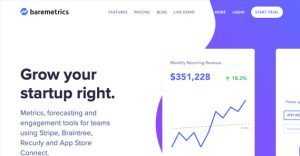30 Techniques to Promote a Sale on Your Website

Many traditional sales techniques rely on an active conversation. They’re all about the pitch, the pressure, the people-reading. A website is different. It’s passive; it sits there and waits for users to make their way through it. All you can do is use other passive means to entice them one step deeper in the funnel, like breadcrumbs leading from Twitter to your shopping cart.
Here are a handful of techniques and improvements you can make to leave more breadcrumbs, make the slope a bit steeper and oil the slopes.
Technique #1
Bring in more users with social media. You’re probably using Facebook and Twitter, but you may want to consider expanding into Instagram, Pinterest, LinkedIn or Tumblr throughout the coming year. You might be surprised at the audiences that exist on each individual platform.
Technique #2
Stand out in comparisons. When users shop for products, they’ll try to find the best among several similar products. They try to find the best iteration of a product among several sellers, as well. You need to stand out, either with the lowest price, the best deals, more add-ons or a better reputation.
Technique #3
Make sure your site is blazing fast. Even a delay of a half a second is enough to add a little low-key stress to any visitor. When your site loads instantly, even on the slowest connections, you spoil your users with how excellent a browsing experience can be. They’ll have a better impression, and be more likely to convert.
Technique #4
Leverage the power of local. If your business can, in any way, take advantage of a local presence, do so. This means utilizing local directories, such as Google+ Places and Yelp. Look for location-specific directories as well. Maintain these local profiles and earn more of a presence through professional management.
Technique #5
Be available on mobile devices. The time is swiftly approaching when the majority of all Internet usage – and thus all online purchasing – will be done through mobile devices. Tablets, smartphones and upcoming wearable tech are more prolific than ever. If you’re not available on mobile, it’s like blocking half of your users from purchasing.
Technique #6
Earn product reviews. Users love reviews. The more reviews you have, the better off your products will be. Every time you sell a product, send a follow-up email later to ask for a review or testimonial. If a user sends an unsolicited review privately, ask if you can post it on your site.
Technique #7
Interview people, and be interviewed. Using a service like HARO will give you additional exposure, which makes your business that much more legitimate, with that much larger of an audience. Being interviewed also gives you the chance to make announcements about new products or changes to existing products.
Technique #8
Write guest posts. Guest posting for solely link and SEO value is a bad idea, but guest posting because you’re an industry player helps build your reputation and gain you exposure to a larger audience. Some of the people who read your post will move on to reading your blog, a gateway to buying your products.
Technique #9
Invest in video marketing. Video is exploding on Facebook, and it’s always been huge on YouTube. You can use both platforms to your advantage, by creating videos ranging from commercials to tutorials to video reviews of your product. A well-produced video is a perfect compliment to a blog post on the same subject.
Technique #10
Build up your mailing list. You should always have several methods for bringing people onboard your mailing list. In fact, you should have several mailing lists, including one for people who want updates on your business, one for potential imminent sales and one for post-sale information and support.
Technique #11
Run paid ads on multiple platforms. You can find some great success through Google AdWords, you can draw in thousands of users through Facebook’s PPC, you can find niche sites you’d never suspect with BuySellAds, and more. Just make sure you keep track of your budgets and don’t go overboard with PPC you haven’t tested.
Technique #12
Network with other businesses. Multi-business networking allows you to partner with other local businesses for special cross-promotions and deals. For example, a user buying something at a partner business might get a coupon for your products, enticing them to check out what you offer and what it can do for them.
Technique #13
Offer wholesale and enterprise deals. Often times, large companies are in the market for what you have to offer, but they can’t afford to pay full price for 1,000 copies of your software license or your product. Offer them a special deal and you may not have the per-unit profit you normally expect, but you’ll make it up in sheer volume.
Technique #14
Hire sales specialists for your direct sales communications. Chances are, you and most of your staff aren’t trained for direct sales. The techniques used by a real sales specialist on a sales call or through a personal email conversation can be highly beneficial.
Technique #15
Make use of a site-based live chat service. These services pop up a box on your site when a user visits, offering to connect that user to a live agent to answer any questions they may have. This doubles as a sales technique and as a live customer support line, so make sure you have knowlegable people on the other end of the line.
Technique #16
Use an exit intent pop-up. Some sites use pop-ups when you sit on the site for a certain amount of time, or you scroll down far enough. These are disruptive to the browsing process and tend to disrupt the sales stream. If you use one that pops when the user is mousing towards the close button, they’re more likely to give it a second glance./
Technique #17
Consider print ads. By using a direct mailer with both a QR code and a short, easy to type URL, you can funnel a bunch of people to your website who might never know how to find it normally.
Technique #18
Become an event sponsor. Getting your name on the list of people sponsoring a popular event, even if you’re not really contributing much compared to larger names, gets you additional exposure you wouldn’t otherwise have. Maybe it’s a banner at the event, a button on their website or a space in their brochure; it’s all advertising you didn’t have before.
Technique #19
Participate as an industry expert online. There are numerous locations for this kind of reputation-building communication. LinkedIn groups are frequently mentioned, as are industry forums.
Technique #20
Don’t be shy with coupon codes. Coupons are incredibly potent; there’s a reason grocery stores give them out like candy. People will buy something on sale even if they didn’t intend to buy before, which doesn’t save them anything, but earns you a sale.
Technique #21
Make sure your payment processing system is absolutely secure, as is your site. You never want to be the one faced with telling your users their information may be compromised.
Technique #22
Expand in demographics. If your local area, for example, happens to have an expanding Latino population, you might consider targeting them with Spanish ads. Be careful, however, that you’re not putting your foot in your digital mouth.
Technique #23
Don’t overwhelm the user with information. If they have to wade through pages upon pages of information just to know what your product is or does, you’re flooding them with the unnecessary. Make the information available, but don’t front-load it.
Technique #24
Don’t waste time with diminishing returns. This works in every aspect of SEO, conversion optimization, funnel optimization and any other form of streamlining your site. There comes a point where more work on SEO is less effective than some work on email marketing, or something else. Exhaust your best options before digging deeper.
Technique #25
Give away free copies of your product or free trials when certain valuable metrics are met. Contests with opt-ins for an entry method work. So do free trials, in general. Just make sure to follow up with the sales pitch when the user trial is almost up.
Technique #26
Go to trade shows, networking events and fundraisers. On the other hand, be careful when you go to these; you can easily waste time you don’t have. Avoid taking too long with any of these events when you have better things to be doing.
Technique #27
Host business Q&A sessions. A comment event on Facebook, a response hour on Twitter or a Google Hangouts session can be valuable to get people to learn more about your business an your offering.
Technique #28
Get your employees to become advocates for your brand. This means keeping them happy and perhaps incentivizing their recruitments.
Technique #29
Curate industry content. You can produce a lot of content on your own, but you should also link to compelling content you didn’t create. Your business is not in a vacuum, after all.
Technique #30
Have a product worth selling. No one is going to buy if what you sell isn’t worth the money, after all.

 ContentPowered.com
ContentPowered.com




